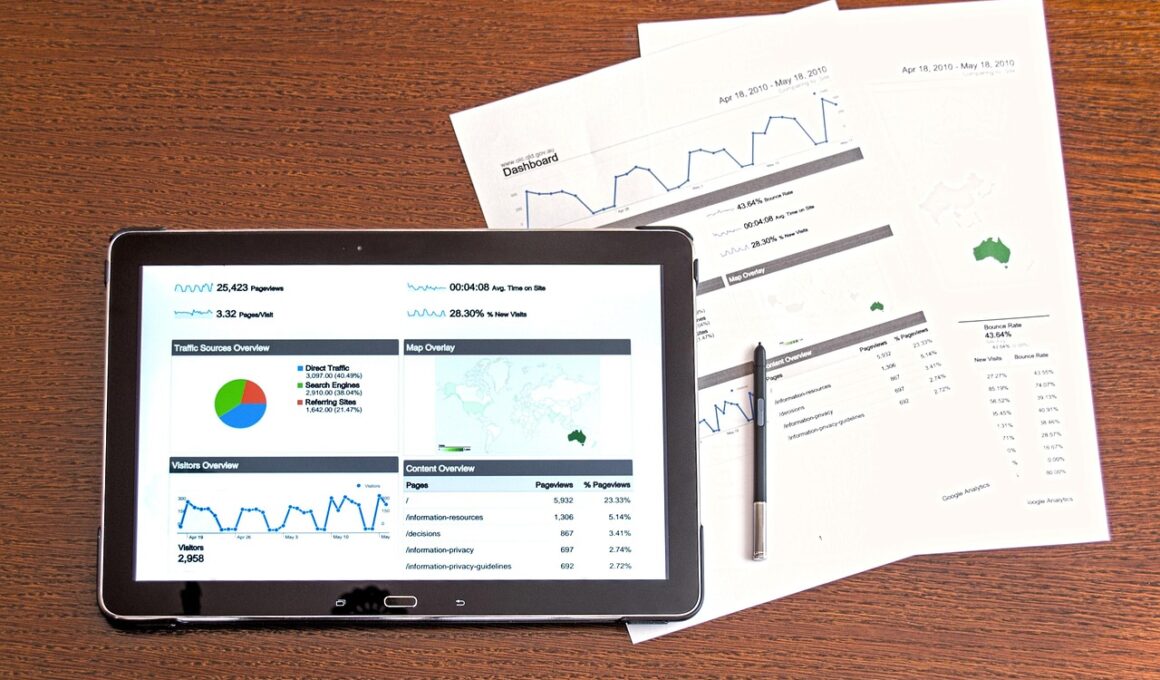Data Analytics in Overdue Account Management
Effective credit management is essential for any business, particularly when dealing with overdue accounts. Today, organizations must leverage data analytics to enhance their strategies. By analyzing data, businesses can identify trends and patterns among delinquent accounts, allowing them to tailor collection efforts. For instance, predictive analytics can help determine the likelihood of payment based on historical data. This information can significantly improve communication strategies. Using data analytics, businesses can segment accounts into categories such as high risk and low risk. Customized approaches can then be employed for each segment. Data visualization tools also play a crucial role in elucidating complex data. They provide insights that empower teams to make informed decisions swiftly. Real-time dashboards can display overdue accounts statistics, highlighting trends over time. This allows businesses to respond proactively rather than reactively. Furthermore, integrating data from various sources enhances the overall understanding of account holders’ behaviors. Such a holistic view supports more effective payment plans. Overall, data analytics transforms overdue account management into a strategic advantage for organizations.
Understanding customer behaviors is paramount in managing overdue accounts effectively. Data analytics tools allow companies to scrutinize customer interaction history, payment patterns, and even external economic indicators. By utilizing machine learning algorithms, businesses can categorize customers based on their behavior. One might identify a group that consistently pays late due to seasonal variations in income, while others may have unpredictable payment patterns influenced by personal circumstances. Understanding these nuances helps organizations formulate tailored communication strategies. Engaging in proactive diligence rather than reactive collection measures can yield documents better results. Furthermore, customers appreciate personalized communication approaches, which can lead to increased customer loyalty over time. Relationships built on trust and understanding are more beneficial, ensuring future business opportunities. Employing customer segmentation enables businesses to design specific outreach campaigns aimed at reducing overdue payments. Approaches might include reminders, flexible payment plans, or even discounts for early payments. Additionally, employing sentiment analysis can uncover underlying motivations for delayed payments. This allows companies to address root causes effectively. In essence, leveraging data analytics helps in shaping a more robust, preventive strategy towards overdue accounts, positively impacting cash flow.
Utilizing Predictive Analytics
Predictive analytics is a powerful tool in the fight against overdue accounts. By analyzing historical data, businesses can forecast future payment behaviors with remarkable accuracy. Predictive models help identify which accounts are most likely to default. Businesses can then allocate resources more effectively and prioritize high-risk accounts. Data collected over time provides insights into payment patterns and customer profiles, enhancing predictive accuracy. Continuous learning algorithms refine these predictions, allowing businesses to adapt strategies accordingly. Additionally, organizations can mitigate risks by identifying which demographic factors correlate with payment issues. This means that targeting specific customer segments could lead to better outcomes in debt recovery. With insights gained from predictive analytics, proactive measures can replace traditional collection tactics. For example, a company could offer tailored payment plans before a customer default. This approach not only saves time and resources but also maintains a positive customer relationship. Ultimately, predictive analytics shifts the focus from merely reacting to overdue payments to intervening before they escalate. By harnessing this data-driven approach, businesses can effectively enhance their overall account management capabilities.
Incorporating advanced analytics into the credit management process strengthens decision-making. Key performance indicators (KPIs) derived from data analytics provide clarity on overdue accounts, allowing executives to hone their strategies. By tracking metrics such as average collection periods and recovery rates, companies can gauge the effectiveness of their methods. Further, peer benchmarking can reveal how an organization stands against industry norms, spotlighting areas for improvement. External data sources can also enrich insights, providing context that internal data may lack. For instance, economic indicators can signal potential downturns, prompting pre-emptive actions for overdue accounts. Moreover, creating detailed reports that visualize these metrics can foster essential discussions among stakeholders. When management is equipped with data-driven insights, strategies can shift from a reactive stance to a proactive approach. This not only enhances the overall efficiency of credit management but also drives better financial outcomes. Automated reporting tools streamline the monitoring of overdue accounts, saving time and reducing human error. Companies that embrace a data-centric strategy in credit management are better positioned to navigate the complexities of overdue accounts effectively, ultimately protecting their bottom line.
The Role of AI in Account Management
Artificial Intelligence (AI) significantly enhances account management, especially concerning overdue accounts. AI applications streamline processes, improving efficiency in data analysis. Machine learning algorithms can predict payment behaviors, allowing businesses to assess risks accurately. Furthermore, chatbots can be employed for initial customer interactions, providing immediate responses regarding overdue payments. This automated engagement frees collection teams to focus on more complex cases. Notably, AI excels at analyzing vast amounts of data at speeds unattainable by humans. Insights generated can lead to more informed decision-making. AI can detect patterns indicative of financial distress, alerting teams before accounts become severely overdue. This creates opportunities for early intervention. Tailored communication campaigns can be launched based on AI-generated insights, leading to improved customer engagement. Additionally, utilizing natural language processing allows for the sentiment analysis of communication history, enabling further customization in outreach efforts. With deeper insights into customer attitudes and preferences, companies enhance their overall collections strategies. As businesses adapt to technological advancements, integrating AI into the management of overdue accounts provides a competitive edge, leading to improved recovery rates and healthier cash flow.
Data analytics also offers strategic insight into collection channel effectiveness. Various communication channels can be evaluated based on response rates and recovery success, aiding in channel optimization. Understanding which strategies work best for different customer segments is vital. Some customers may respond better to emails, while others prefer phone calls or SMS reminders. By examining historical data, businesses can align their communication strategies with customer preferences for maximum impact. Additionally, testing and refining approaches can enhance overall strategy effectiveness. Implementing A/B testing, for example, can illustrate which reminders yield better results, enabling continuous improvement. Maintaining an adaptable strategy based on data ensures that efforts remain relevant and effective over time. Moreover, analytics support the identification of potential payment plans that may cater to diverse financial situations, facilitating affordability for clients in need. Clear, well-structured payment solutions can increase recovery rates while preserving customer relationships. Therefore, businesses deploying data analytics gain a distinct advantage in managing overdue accounts more proficiently. Creating an ongoing cycle of data-driven practices ultimately leads to sustainable financial health for companies.
Conclusion: The Future of Overdue Account Management
As technology continues evolving, the role of data analytics in overdue account management will only grow. Organizations will increasingly rely on data-driven insights to inform their strategies. The ability to adapt to changing consumer behaviors, potential economic shifts, and industry standards is crucial for long-term success. Companies need to foster a culture of continuous improvement supported by analytics to remain competitive. Investing in technology that facilitates data gathering and analysis is vital for businesses aiming to refine their credit management processes. Furthermore, collaboration within teams will enhance analytics’ effectiveness, ensuring that insights inform every level of the organization. Collectively leveraging data fosters innovative solutions to reduce overdue accounts and improve cash flow. As organizations move forward, embracing an analytical approach to credit management will serve as a backbone for sustainable growth. Future developments in AI and machine learning will likely open doors to even more advanced predictive capabilities, transforming account management paradigms. Organizations with a forward-thinking mindset will become the leaders in effective overdue account management.
The integration of data analytics into overdue account management is not just beneficial; it is essential. Organizations willing to adopt these strategies will be better equipped to navigate financial challenges and ensure stability in their operations. By continuously analyzing data, organizations can remain ahead of trends, enhancing their collection efforts while preserving customer relationships. As the landscape of credit management evolves, companies must remain adaptable, refining their strategies based on insights gained from data analytics. This data-centric approach not only improves efficiency but also positions businesses to achieve better financial outcomes in the long run.


